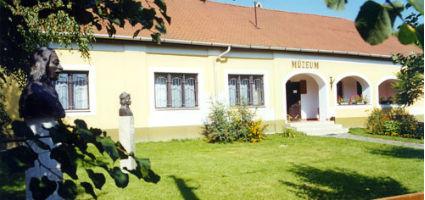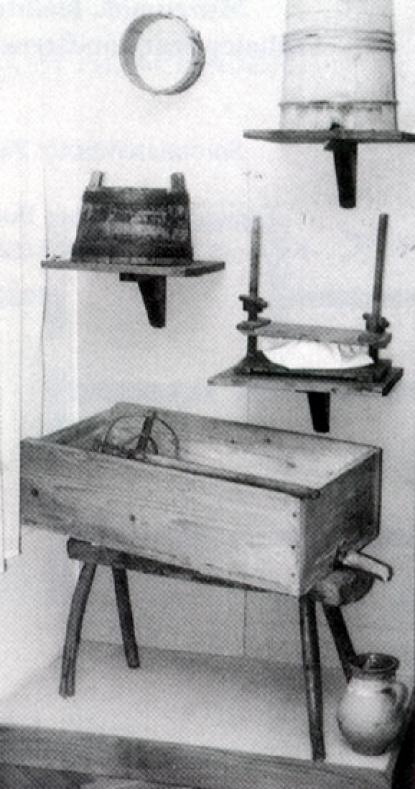2024. April 27. Saturday
Ferenc Zajti Region Historical Collection - Újfehértó
 |
Address: 4244, Újfehértó Egészségház utca 2.
Phone number: (42) 290-600
E-mail: umuzeum@enternet.hu
Opening hours: Tue-Fri 9-15
Saturdays and Sundays only for groups on prior notice |
Museum tickets, service costs:
|
Ticket for adults
|
50 HUF
|
|
|
Ticket for pensioners
|
25 HUF
|
Újfehértó had a significant region of farms. More than a thousand of its population still earn their living from farming. They used to have a dwelling house in town, whilst they were working in the farm from spring to autumn.
 The permanent exhibition represents the courtyard of a former peasant household.
The permanent exhibition represents the courtyard of a former peasant household.
The outhouse used to function as a stable for the animals throughout the winter. The people had used to build it both in the town and in their farms. However, in the 19th century they were exclusively built in the farms. Some part of it was used as a stable, and the rest of it was used for storing the instruments.
The goat yoke was also kept here. This was made by the poorest classes, who had no money for cows and horses. The "cow of the poor man", that is the goat, was giving milk to the family and could also pull even a small carriage.
Opposite the outhouse we can see the most important instruments of animal husbandry:mouthpieces, yokes, stamping device, and the little bells.
At the rear end of the outhouse, in front of a painting covering the whole wall, we demonstrate a plowing scene reflecting the 1920'ies.
The winter and summer costume of the shepherds, the shepherd's rod and the loyal companion, the Hungarian shepherd dog (puli) are represented in front of a picture painted of the local plains.
The work of sheep-keeping was brought to the area by the Greek Catholic Romanians. Their family names still uphold their memory today. They have kept up the methods and tools of sheep milk processing.
 The permanent exhibition represents the courtyard of a former peasant household.
The permanent exhibition represents the courtyard of a former peasant household.The outhouse used to function as a stable for the animals throughout the winter. The people had used to build it both in the town and in their farms. However, in the 19th century they were exclusively built in the farms. Some part of it was used as a stable, and the rest of it was used for storing the instruments.
The goat yoke was also kept here. This was made by the poorest classes, who had no money for cows and horses. The "cow of the poor man", that is the goat, was giving milk to the family and could also pull even a small carriage.
Opposite the outhouse we can see the most important instruments of animal husbandry:mouthpieces, yokes, stamping device, and the little bells.
At the rear end of the outhouse, in front of a painting covering the whole wall, we demonstrate a plowing scene reflecting the 1920'ies.
The winter and summer costume of the shepherds, the shepherd's rod and the loyal companion, the Hungarian shepherd dog (puli) are represented in front of a picture painted of the local plains.
The work of sheep-keeping was brought to the area by the Greek Catholic Romanians. Their family names still uphold their memory today. They have kept up the methods and tools of sheep milk processing.
